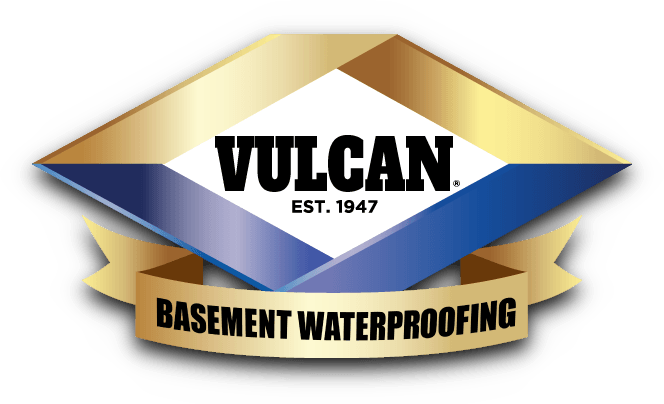Vulcan Basement Waterproofing In Bronxville, NY
“We’re not just in the basement waterproofing business… We invented it” is not just a slogan, it is a Fact.
Decades ago, in cooler climates, there was a need to house large coal and wood fired heating plants. This was done in the space below the house, which we now call the basement. It was the smart place to put it because, as we know, hot air rises and the heating plants could be more efficient if placed below the space to be heated. It was also a filthy, dirty, dusty, ash-laden mess and keeping it out of the living area was important. In time the heating plants shrank and were replaced by much smaller electric, propane and gas fired units.
A More Detailed Inspection for Basement Water Damage
Even if none of the above problems seem to exist, continue with a more detailed inspection of your basement walls.
-
- Poured concrete walls
efflorescence (a whitish powder) could indicate seepage and porosity that tend to worsen.
- Poured concrete walls
-
- Wall surfaces
Search for vertical or horizontal cracks. Some may have fully penetrated the wall, opening routes for water entry – depending on local water table and soil conditions.
- Wall surfaces
-
- Construction joints
Explore for openings where basement walls and floors meet. Such gaps can admit water and insects, as well as lead to cracked floors.
- Construction joints
-
- Mortar joints
Inspect mortar joints especially around below-grade piping and conduits when leakage appears, your floor space could be rendered unsafe for storage, carpeting or laundering use.
- Mortar joints
-
- Structural points
Examine corners where frames butt against foundation walls. These junctures are often uneven, resulting in gaps.
- Structural points
-
- Efflorescence
The appearance of efflorescence warns that basement water seepage is threatening your foundations and that cracks will endanger your basement floors.
- Efflorescence
-
- Water pipes
Check your pipes for excessive condensation.
- Water pipes
- Masonry block walls
Look for signs of staining in the block closest to the basement floor. This could mean water is building up inside the wall and deteriorating the block’s integrity.
